U.S. natural gas prices surged in the first half of 2022. In more recent months, prices have been volatile but still high relative to pre-pandemic levels. While this jump in U.S. natural gas prices pales in comparison with the surge in Europe and Asia over the past year in the run-up to and fallout from the Russia-Ukraine war, it nevertheless has focused attention on consumers’ winter heating bills and Oklahoma’s potential in natural gas production. This edition of the Oklahoma Economist explores where the state stands in terms of natural gas consumption and production, and what trends may lie ahead.
Winter Implications for Oklahoma Utility Bills
Oklahoma is a major consumer of natural gas, ranking fourth among states in 2021 in terms of consumption per capita, behind only Alaska, Louisiana, and Wyoming (Map 1). As in many states, natural gas remains a primary residential and commercial heating fuel, and Oklahoma also generates a higher share of its electricity from natural gas than the nation, which still relies somewhat more heavily than Oklahoma on coal (Chart 1).
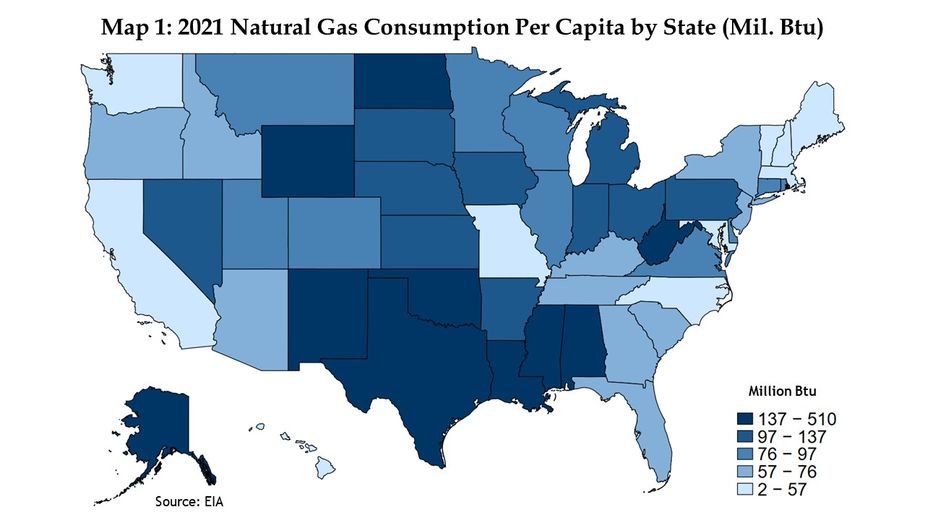
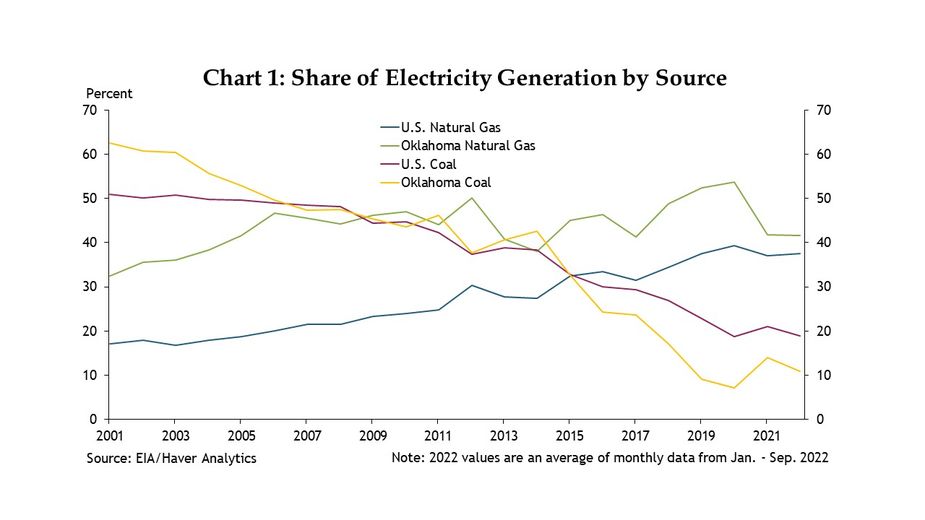
As natural gas prices moved up beginning in late 2021, so did home heating bills. The national price of natural gas to residential customers consistently averaged between $12 and $13 per thousand cubic feet during the decade of the 2010s and was only slightly higher in Oklahoma (Chart 2). But residential prices rose around 50% in late 2021 and have mostly stayed at that level since, although a recent easing in prices may prove timely for Oklahomans.
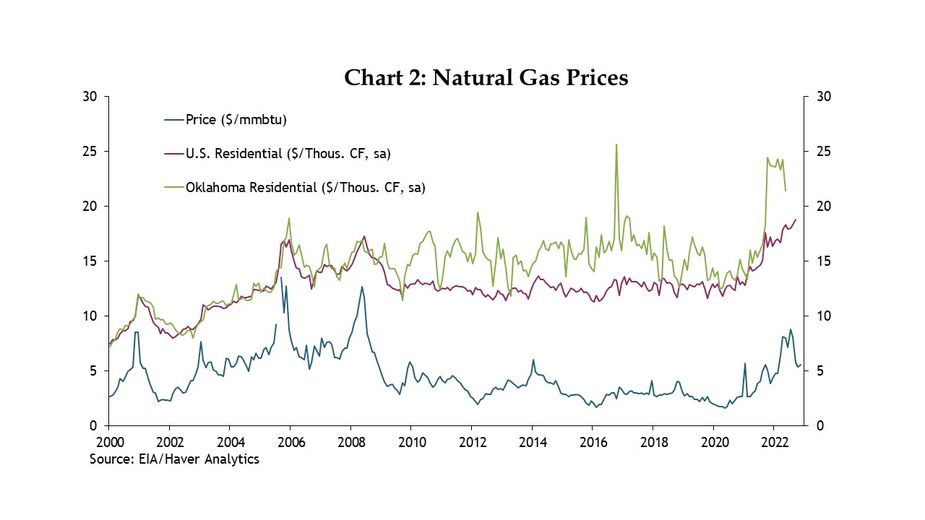
Response in Oklahoma Natural Gas Drilling and Production
Oklahoma has also ranked highly in natural gas production across states in recent decades. In 2021, the state ranked fifth in total production, behind only Texas, Pennsylvania, Louisiana, and West Virginia (Chart 3). At various times since 2001, Oklahoma has ranked as high as second or third in production.
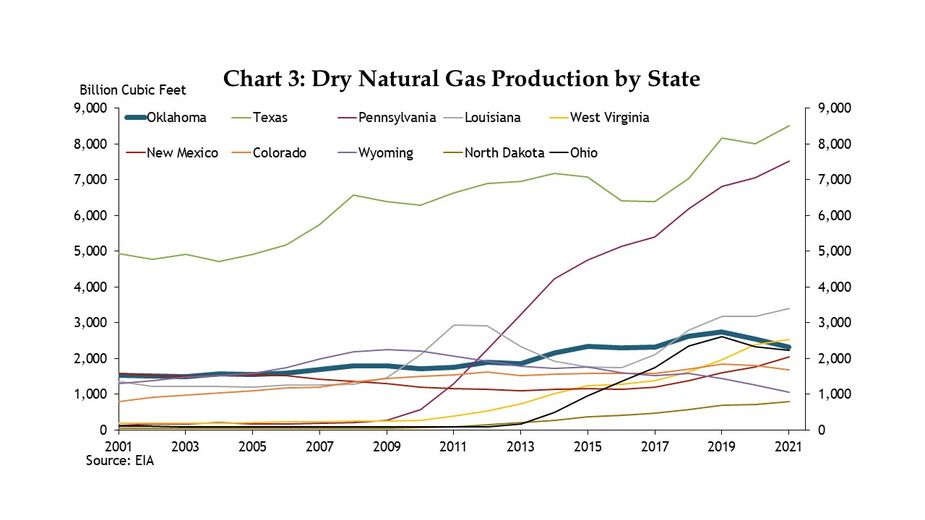
The rise in natural gas prices in 2022 pushed prices well above profitable levels for most producers in the Tenth District, according to the quarterly Federal Reserve Energy Survey (Chart 4). In the latest survey, firms said they needed natural gas to be above $4.42 per million btu to be profitable for drilling in the fields in which they are active. This is well below actual prices throughout most of 2022. During the summer, prices were actually at or above the price firms say they need to significantly expand drilling activity.
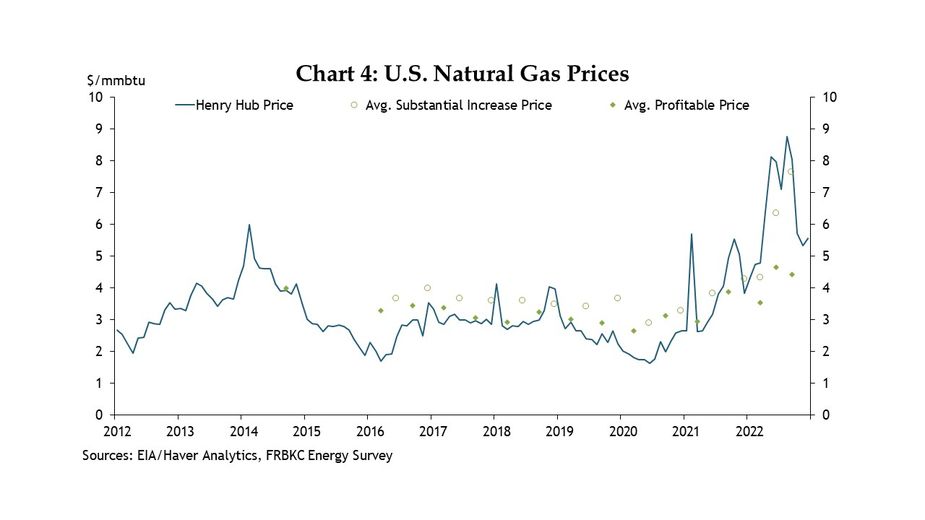
In response, the rig count drilling specifically for natural gas in Oklahoma rose from zero at the beginning of the year to four by September (Chart 5). Natural gas is also produced as a by-product of oil drilling, and that activity also rose moderately during the year. However, the rig count fell again as natural gas prices cooled from peaks in the fall, while weather remained mild and European demand concerns eased slightly. As a result, natural gas production in Oklahoma increased moderately by mid-to-late 2022, although unlike in the nation it remains below pre-pandemic levels (Chart 6).
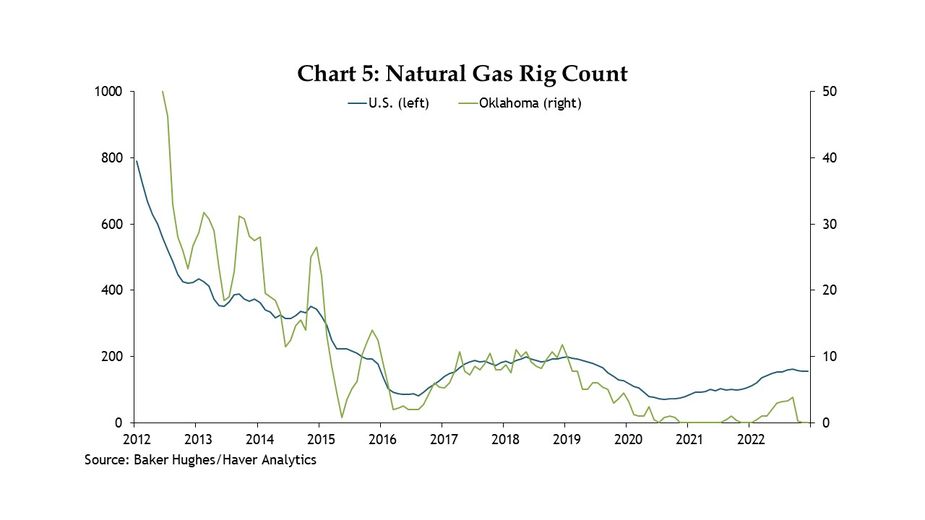
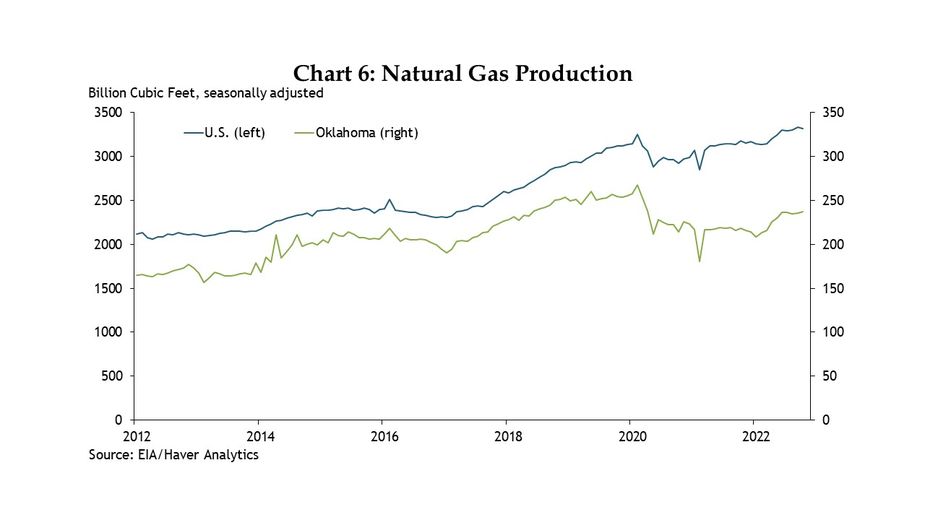
Future Possibilities for Oklahoma Natural Gas
For most of the 2010s, U.S. natural gas production was constrained somewhat by the inability to export it internationally. In 2016, U.S. exports of liquified natural gas (LNG) began, as terminals capable of compressing and loading the fuel onto ships began to open. Since then, U.S. LNG exports have risen steadily, except during the depths of the COVID-19 pandemic in 2020 (Chart 7). In 2022, the primary destination of those exports changed from Asia to Europe, as its need for the fuel increased after Russia’s invasion of Ukraine and reduction in natural gas supply to the rest of Europe. Further exports of U.S. natural gas will depend on expanded port terminals and transportation. Based on projects planned in coming years, daily export capacity is set to rise from around 14 billion cubic feet (bcf) in late 2022 to nearly 20 bcf by the end of 2025, an increase of nearly 45% (Chart 8).
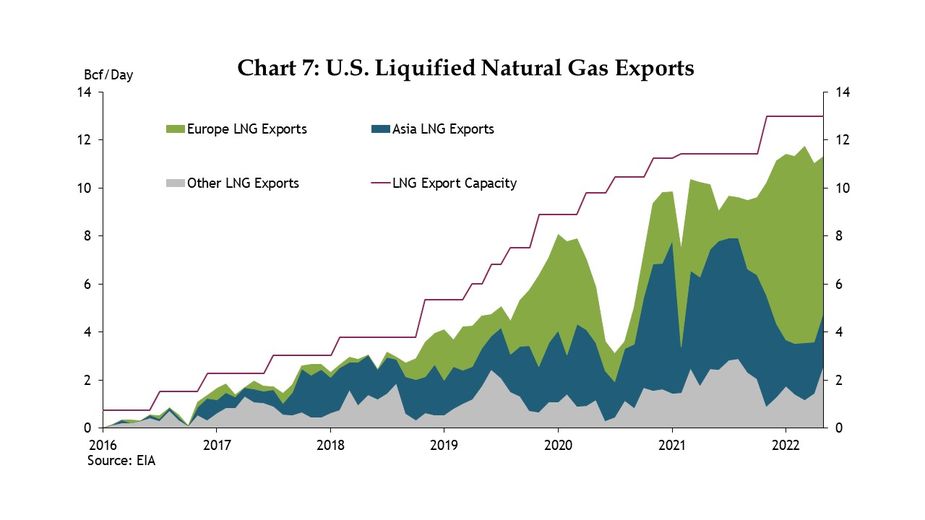
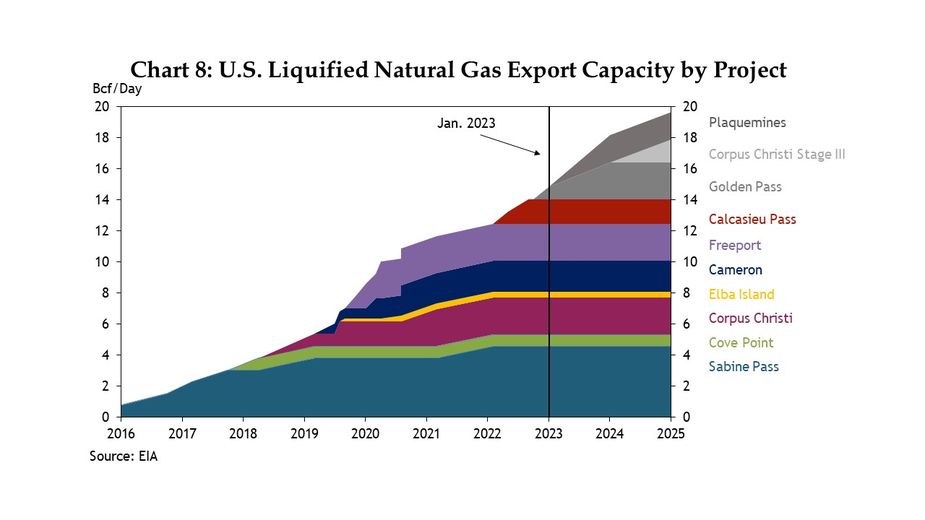
In addition, natural gas likely holds a better position than some fuel sources during the transition to less carbon-intensive emissions. Its carbon dioxide intensity is lower than for coal and oil (Chart 9). It also cost less in 2021 than other sources of energy, including not just other fossil fuels but also nuclear, wind, and solar energy, although the gap with renewable fuels has diminished rapidly in recent years (Chart 10).
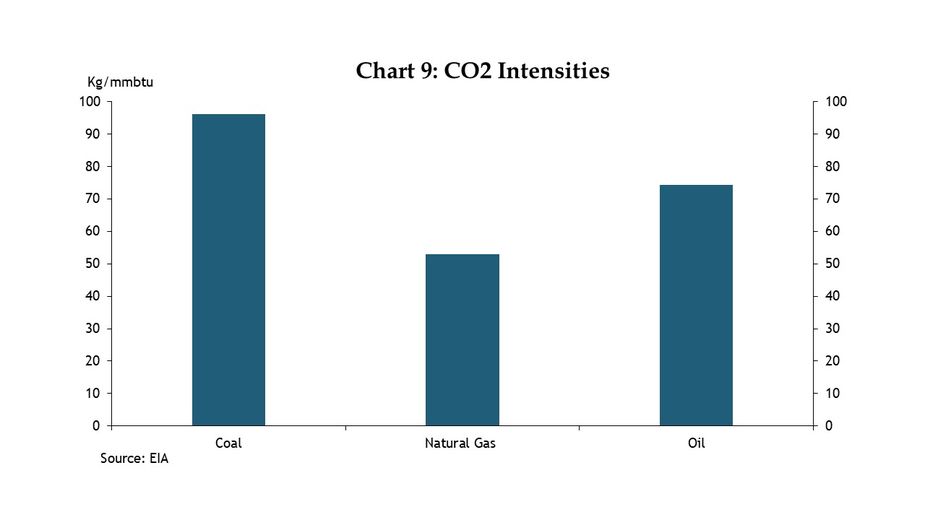
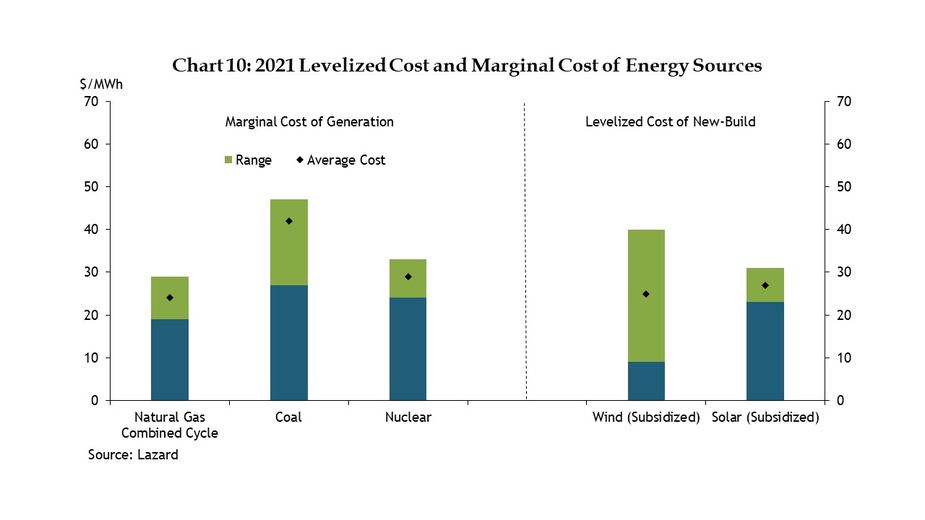
Summary and Conclusions
The sharp rise in natural gas prices in 2022, following a decade of stable and low prices prior to the pandemic, increased interest in Oklahoma’s use and production of the fuel. As might be expected, costs to consumers rose with higher fuel prices, and drilling for and production of natural gas also increased during 2022, although the increase was less than in the nation and prices have cooled recently. Heading forward, U.S. natural gas may also play a larger role in supplying the rest of the world, via higher LNG exports and in helping a transition to a less carbon intensive future.
